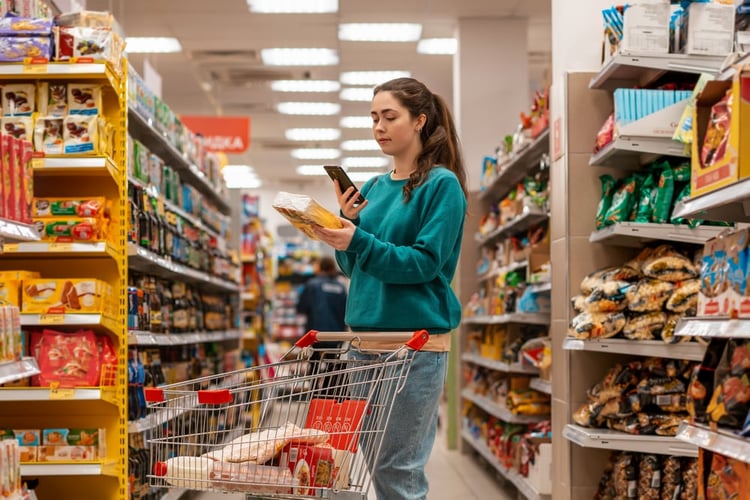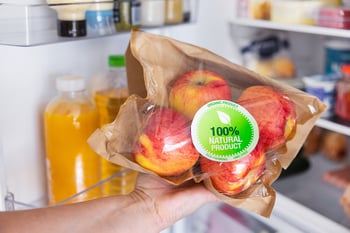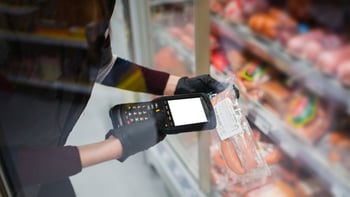
Farm-to-table is a popular concept for restaurants. But it doesn’t carry across to every type of food and beverage we consume. There’s a larger movement in the industry underway.
Today’s consumers care about what they eat--and they want more information regarding the ingredients in their food, their food’s origins, and how sustainable their food choices are. A few simple technology-based solutions can make transparency possible within food distribution.
Consumer Demand for Transparency in the Food Supply Chain
Ethical and sustainability claims are becoming increasingly important to consumers who aren’t just looking for the cheapest, tastiest, or most nutritious food products. While those other qualities are still important to consumers, many are placing transparency at the top of the list. So much so that they are willing to pay more for transparent brands or will forgo purchasing from those that don’t share information.
 According to a recent NielsenIQ and Food Industry Association report, two-thirds of food shoppers say they would switch from a regular brand to one that provides more detailed product information. Regarding food transparency, nutrition, and ingredient information remain priorities for an increasing number (66%) of consumers. But, the majority (80%) of respondents said other factors, like values-based information, certifications, and allergen information, drove their purchasing decisions.
According to a recent NielsenIQ and Food Industry Association report, two-thirds of food shoppers say they would switch from a regular brand to one that provides more detailed product information. Regarding food transparency, nutrition, and ingredient information remain priorities for an increasing number (66%) of consumers. But, the majority (80%) of respondents said other factors, like values-based information, certifications, and allergen information, drove their purchasing decisions.
Some brands may be reluctant to invest in transparency due to cost concerns. But it’s such a priority for some consumers that they are willing to help businesses foot the bill for the information. According to another consumer survey, 69% of customers say they are willing to pay more for products labeled with clear safety and quality certifications or standards. 53% of respondents say they want more transparency regarding food safety, product content, allergens, and hygiene.
The studies surrounding transparency show that these efforts on behalf of brands generally translate to trust, which also fosters customer loyalty. When retailers and manufacturers share information, consumers are more likely to trust and recommend those companies, which improves overall and long-term results.
Using Technology to Deliver Better Food Transparency
Consumers are looking for a wide variety of information about food products, from nutritional data to sourcing to manufacturing processes to country of origin to logistics data. This is true whether a consumer shops online, in the store, or chooses an omnichannel experience.
So, how can brands deliver better food transparency? As with many others of the supply chain, technology is playing a role in giving consumers what they desire. Here is how businesses can use technology to deliver better food transparency.
RFID Tags
Intelligent labeling solutions in the food industry allow for end-to-end transparency and traceability. Using radio frequency identification (RFID), items from seeds to crops to processed foods can be securely traced in real time.
 RFID tags can hold valuable information about items, such as dates, descriptions, and even humidity and temperature levels. This information can allow consumers to view the information they desire relative to food origins and health data.
RFID tags can hold valuable information about items, such as dates, descriptions, and even humidity and temperature levels. This information can allow consumers to view the information they desire relative to food origins and health data.
Whether in the grocery store, online, or at a local restaurant, consumers can scan an
RFID tag to learn where an item came from and how it arrived at its destination and a plethora of information about nutrition and any other ingredients or additives.
RFID can also help mitigate certain risks. For example, having real-time and traceable data allows supply chain patterns to prevent or address cross-contamination, prevent unnecessary waste, stop the spread of foodborne illness, and reduce the economic cost of product recalls.
Blockchain
Blockchain is another solution being used to inject transparency into the food supply chain. Best described as a digital ledger of records stored across many computers, blockchain has become a popular solution because it is versatile and secure.
One way blockchain is being used to track and trace items from seed to manufacturer to store to consumer. Some inspectors are using blockchain to verify information about products for the sake of organic or other certifications.
Processors are using the technology to ensure they are receiving the correct quantity of items and to track shipments in and out of their facilities. Distributors are using blockchain to track inventory and maintain records of shipments. Retailers are using it to trace products, verify credentials, and help prevent and eliminate fraud. Finally, all organizations can use the technology to comply with food safety regulations, such as those created by the FDA.
Advanced Insights
Technology can also provide supply chain partners and consumers with more information about conditions that could impact food products going forward. For example, businesses are increasingly using advanced insights to monitor current market conditions, prevent risk, and predict changes.
Instability in certain regions, such as the war in Ukraine, can impact food prices throughout the EU or even worldwide. Major weather events like monsoons have destroyed crops and disrupted the movement of goods. And accidents, like ships blocking major canals, can delay shipments, which can result in spoiled food.
Advanced insights are also being used by farmers to determine the most optimal times for harvesting crops. By sharing data, others can replicate these methods and reduce overall risk.
As food and beverage companies strive to deliver the highest standards in safety and quality, it’s a continuous balance to also make sustainable and ethical choices. Now more than ever, consumers want to know what’s going on behind the scenes with food production so they can make more informed purchasing decisions. Fortunately, technology solutions like RFID and blockchain will allow more transparency in the food supply chain.












